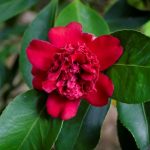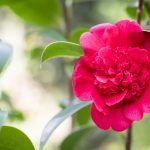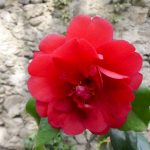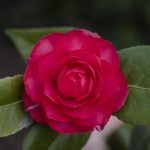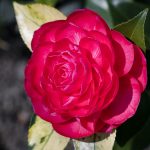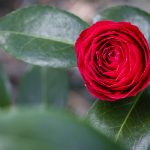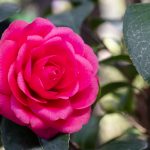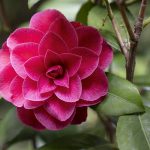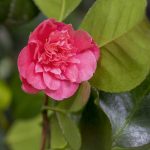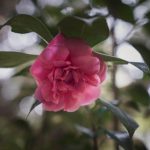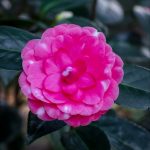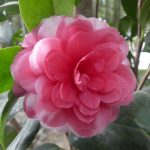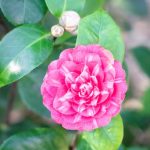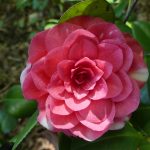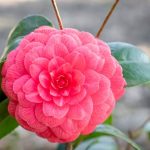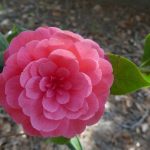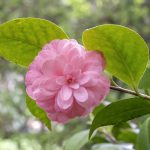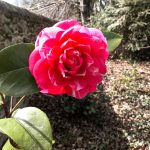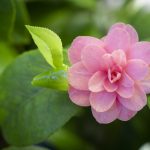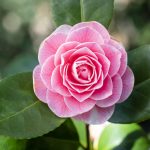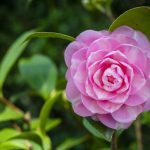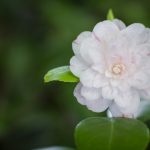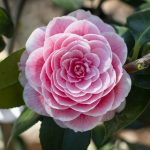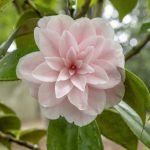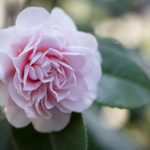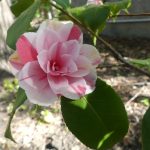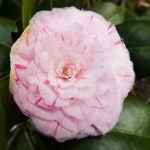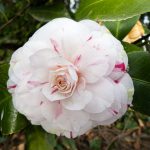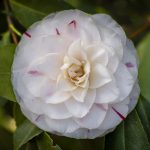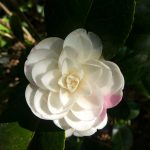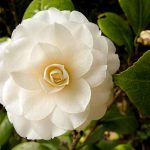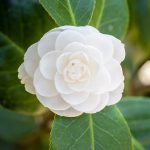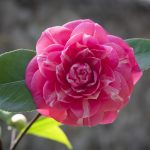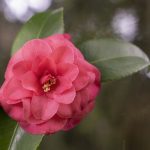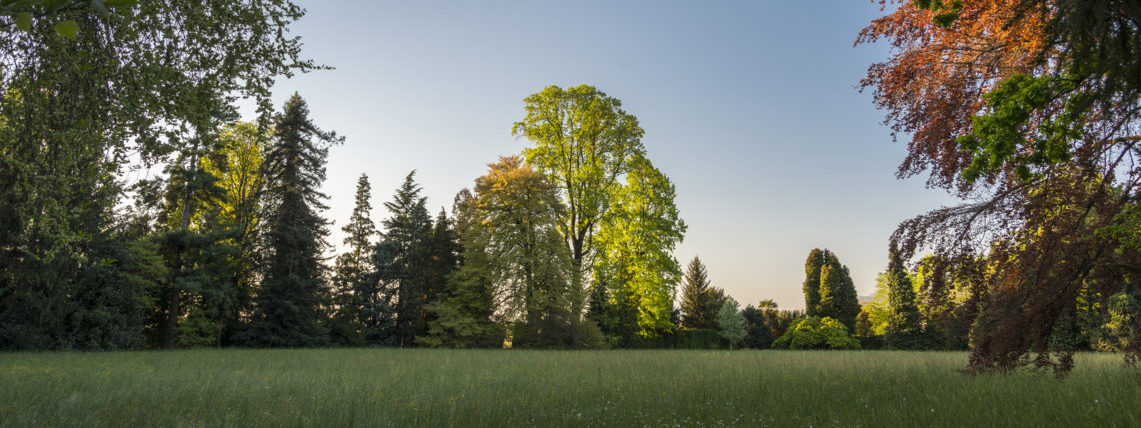125. Mathotiana
CODICE: 125

Morphological characteristics
FLOWER
- FLOWER
- Rose form
- DIAMETER
- 8,5 – 10,0 cm
- DEPTH
- Rose form
- SIZE
- Medium
- PETALS
- Number: 36 - 39
Shape: Rounded (outer petals), elliptical (inner petals)
Surface: Slightly convex
Margin: Linear
Color: Deep Purplish Pink (55 A) - STAMEN
- Number: 12 - 16
Disposition: Dispersed
Filament’s color: 155 C
Anther’s color: 11 C - PETALOIDS
- Number: 2 - 5
Disposition: Regular - VARIEGATIONS
- Type: -
Color: - - OTHER FEATURES/NOTES
- Other features/ notes: Evident veining
LEAF
- LUNGTH
- 8,9 – 11,0 cm
- WIDTH
- 4,6 – 5,6 cm
- SHAPE
- Blade: Elliptic
Apex: Acuminate
Margin: Briefly serrated - COLOR
- Upper page: 147 A
Lower page: 146 B
Plant observed
- Location
- San Secondo di Pinerolo, Park of Miradolo Castle (TO)
- Number
- 125
- Origin of the mother plant
- Park of the Camellias of Locarno (Canton Ticino - CH) – N. 5631
- Blooming
- Periodo: Medium late Densità: Low
- Where to observe the same variety
- Isola Madre – Lago Maggiore
Historical and bibliographical information
- Origin
- Belgian
- Year of constitution
- 1847 circa
- Breeder
- Mathot – Grand - Belgium
- Synonyms
- ‘Mathotiana Rubra’
- First known description
- Spae, 1847, Annales de la Société Royale d’Agriculture et de Botanique de Gand, 3:469-460, pl.170: “This flower is distinguished by its vigorous habit; its branches are strong, brown and very heavily foliaged; the leaves are very large and thick, of a dark green and very dentate. The flower is of the most beautiful cerise-red, very large ... the petals are large, very well imbricated and adhere strongly to the tortus, the type of flower which remains for a long time on the plant and it acquires in the end a purple violet color.”
- Additional citations
- Anonimo, 1847, Gardener’s Chronicle, p.434. Regione Piemonte, 2000, Camelie dell’Ottocento nel Verbano, p.170-171.
- First known illustration
- Verschaffelt, 1849, Nouvelle Iconographie, liv. 9, pl. 3.
- Additional illustrations
- -
- Notes and remarks
- Cultivar of controversial identification, as it is often confused with 'Gran Sultano' or 'Te Deum'. It is not the progenitor cultivar, although it may seem so, of 'Mathotiana Alba' or 'Mathotiana Rosea'.
